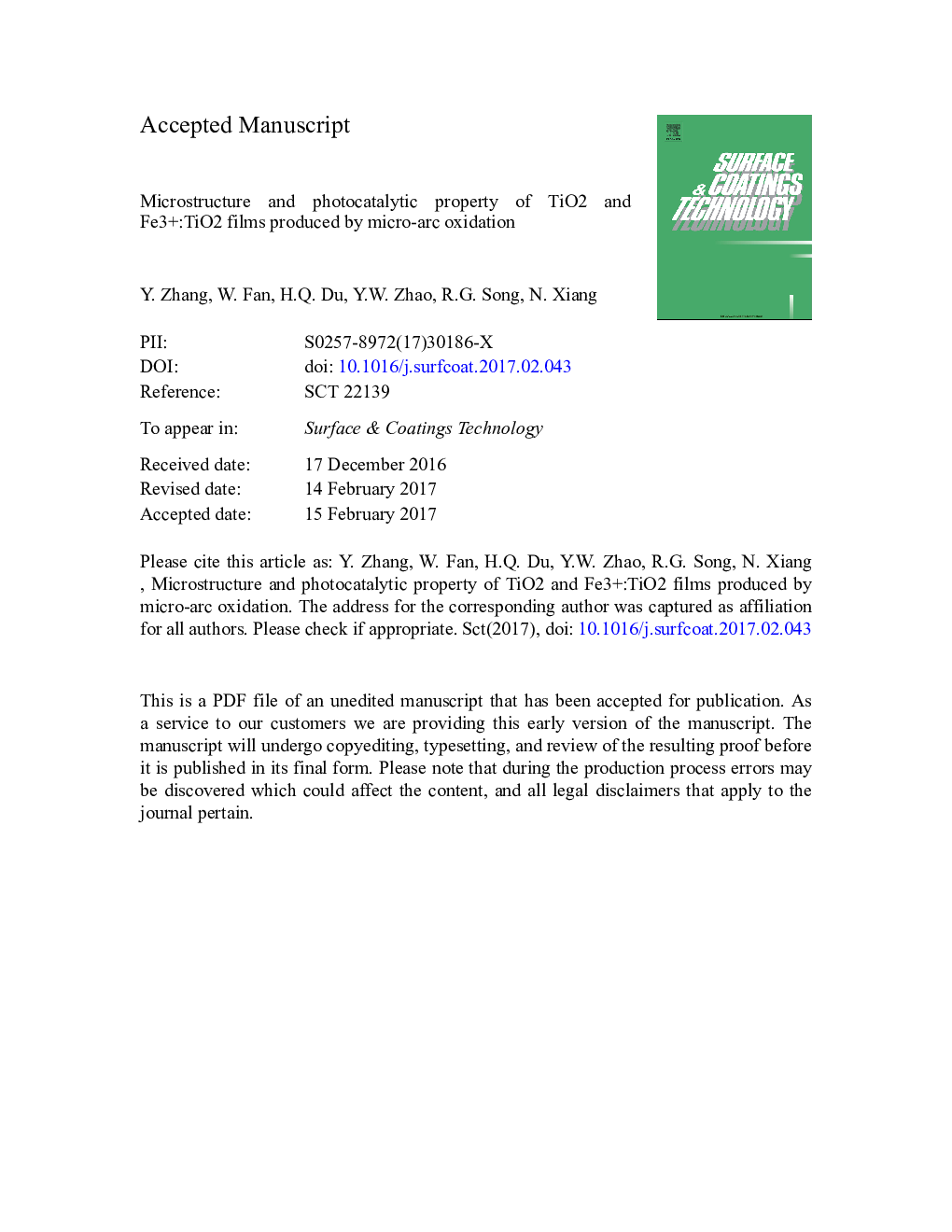| Article ID | Journal | Published Year | Pages | File Type |
|---|---|---|---|---|
| 5464672 | Surface and Coatings Technology | 2017 | 38 Pages |
Abstract
First, the TiO2 films prepared by micro-arc oxidation (MAO) were formed in phosphate based electrolyte on pure titanium; after that, they were impregnated with Fe3Â +-containing electrolyte to produce the Fe3Â +:TiO2 composite films. Effects of the applied current density and impregnation time and concentration on physical and chemical properties of TiO2 and Fe3Â +:TiO2 composite films were investigated by Scanning electron microscopy (SEM), stereoscopic microscopy, X-ray diffraction (XRD), X-ray photoelectron spectroscopy (XPS) and energy-dispersive X-ray spectroscopy (EDS). A UV-vis spectrophotometer was also used to study photocatalytic properties of both films. It is indicated that the film formed in phosphate-based electrolyte were composed of anatase phase with varying fraction depending on the applied current density. XPS results revealed that Ti2p spin-orbit components of Fe3Â +:TiO2 composite films are shifted towards higher binding energy, with respect to TiO2 films, suggesting that some of the Fe3Â + ions are incorporated into TiO2 lattice. Photocatalytic activity of the films was studied by measuring the degradation rate of methylene blue on their surface under simulated sunlight irradiation. The Fe3Â +:TiO2 composite films showed an obvious enhanced photocatalytic activity than the pure layers under UV-irradiation, while their photocatalytic degradation was much higher than that of the TiO2 film under the irradiation.
Related Topics
Physical Sciences and Engineering
Materials Science
Nanotechnology
Authors
Y. Zhang, W. Fan, H.Q. Du, Y.W. Zhao, R.G. Song, N. Xiang,
